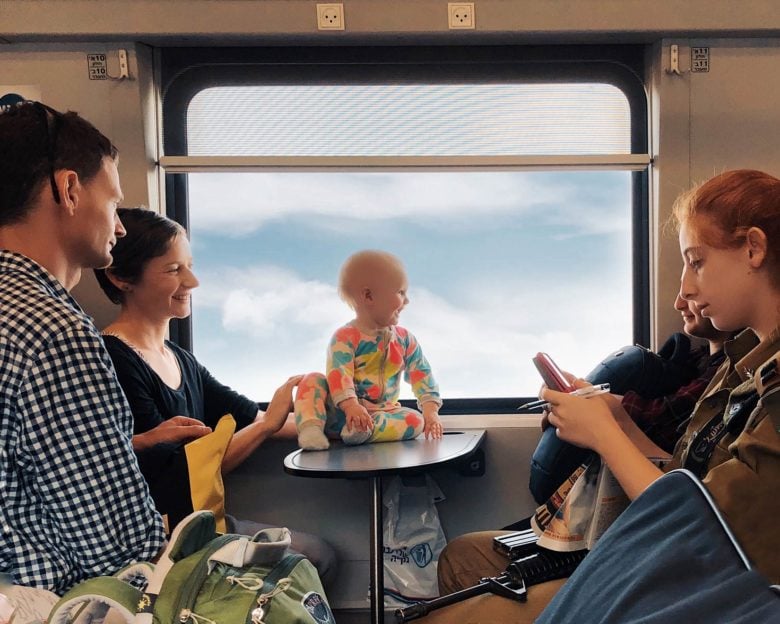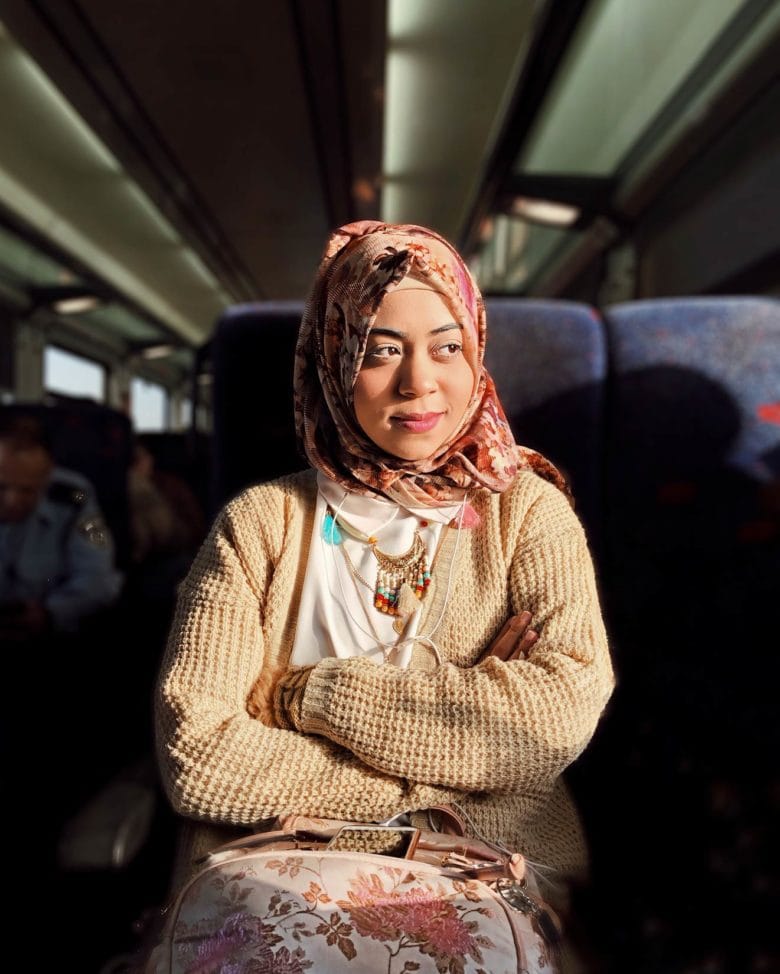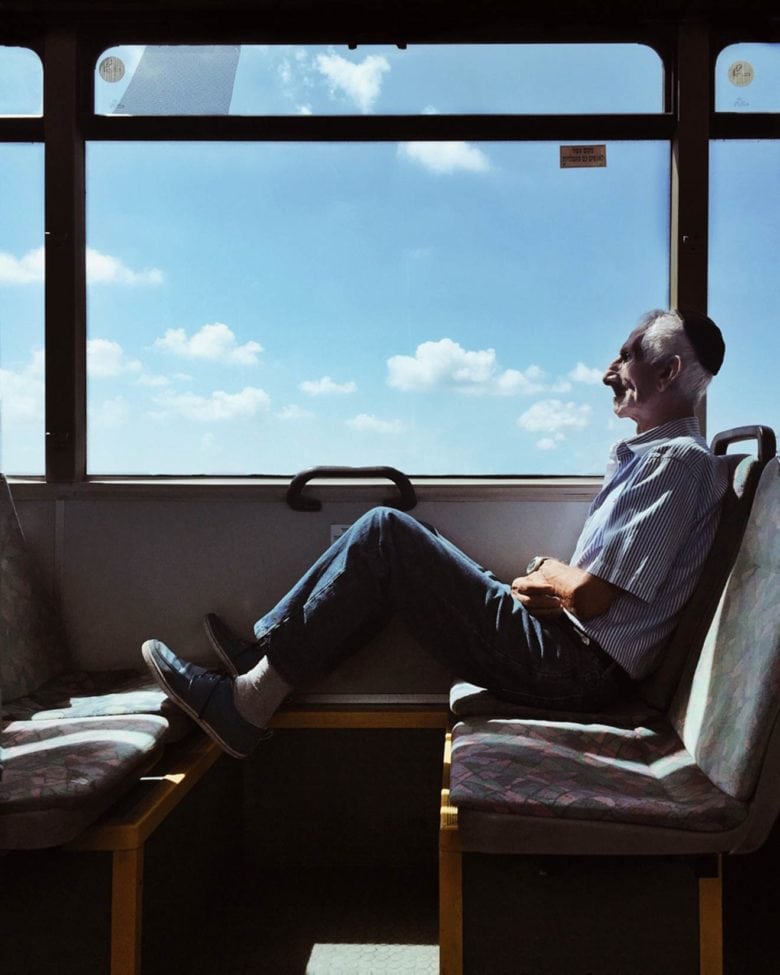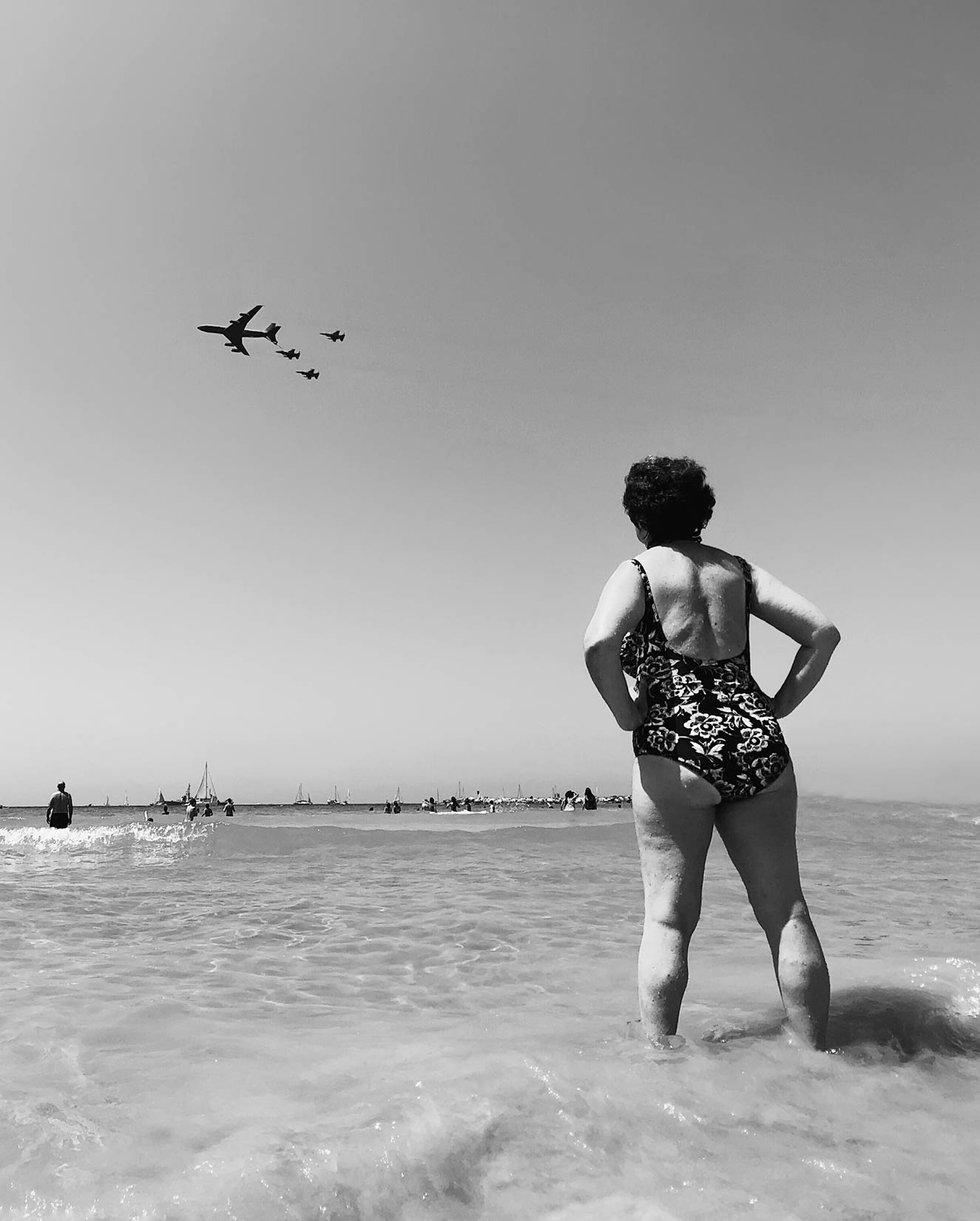Dina Alfasi is like most commuters. As soon as she finds a seat on the train or bus, she pulls out her iPhone.
Alfasi may look like she is catching up with emails, streaming music or reading the news. Instead, Alfasi is making a discreet photograph of the person across from her.
Buses and trains provide captive subjects and they’ve been unsuspecting muses of photographers ever since the early 20th century when cameras became pocket size.
But Alfasi with her iPhone X brings an unexplainable newness to people trying to get somewhere. On her commute to her building engineering job at a hospital in Israel, Alfasi picks a seat based on her interest in the people within striking distance.

Photo: Dina Alfasi
Dina Alfasi and her iPhone
Her work has been exhibited around the world and often is a favorite of judges in various contests, including the Mobile Photography Awards. Last week, Alfasi learned she won seven MPA awards including first place for a category with her name on it – transportation.

Photo: Dina Alfasi
“There is something both intimate and vulnerable about the way a person exists in a public space,” Alfasi told Cult of Mac. “My daily photographs capture something inherently familiar in each of the strangers, lost in thought on their way somewhere.
“Photographing people on buses and trains has taught me a lot about the depths of human complexity. There is no end to discovering new facial expressions and behavior.”

Photo: Dina Alfasi
She has been dubbed the commuter photographer in headlines as her pictures garner more and more interest. The title, though, does not speak to the depth of her art. Trains and buses are beside the point.

Photo: Dina Alfasi
Finding stories on the commute
The pictures offer glimpses into family life, Israel’s diversity, its landscape and quiet declarations of identity. Some of the faces wear that public transportation veneer, a look of do-not-approach. Others are meditative. “Deep in thought,” as Alfasi describes, is constant and invites viewers to imagine what occupies the minds of the people.
If the idea of photographing subjects without consent sounds exploitive or voyeuristic, Alfasi’s final take is beautiful, respectful and dignified.
She also records scenes on her walks to and from the transit stations and on work breaks at a nearby beach.

Photo: Dina Alfasi
“I like to take pictures in any situation that has a human element,” Alfasi said. “At first, I photographed only my son, but over time I began experimenting with street photography.
“My eyes are always looking for special characters and next to them I’d rather sit if there is a place of course. There are days when I cannot find anything to take pictures of, but I never give up.”

Photo: Dina Alfasi

Photo: Dina Alfasi
Alfasi has been reluctant to call herself a photographer, referring to her work as a hobby. She was always interested in photography but did not work seriously at it until she bought her first iPhone. When she began taking pictures on her commute from Hadera to Haifa, which takes up two hours each day, she said she surprised by the meaning and “authenticity” in the pictures she made.
But the recognition, which includes an exhibition in the gallery of the prestigious International Center for Photography in New York, has made her more comfortable with the title. She loves her work at a hospital and for now, just wants to continue enjoying mobile photography.

Photo: Dina Alfasi






Recent Comments